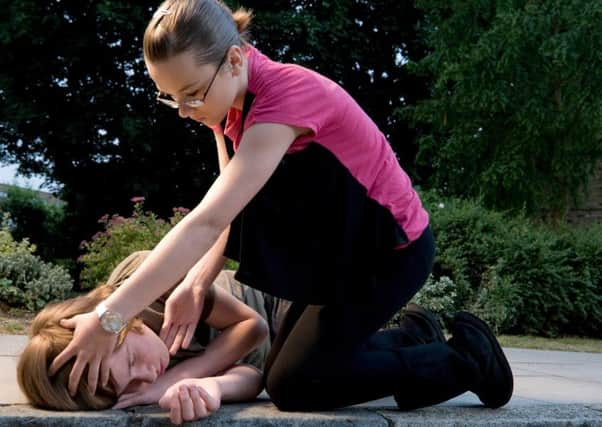FIRST AID: Recognising and dealing with seizures in children


A seizure can also be known as a convulsion or fit. In young children, seizures are usually caused by a raised body temperature, often following an infection.
This type of seizure, known as a febrile seizure, occurs because the brain is not mature enough to cope with the body’s high temperature.
What to look for:
n Loss of or lack of a response
n Vigorous shaking, with clenched fists and an arched back
n Signs of a fever, with hot, flushed skin and sweating
n Twitching of the face
n Squinting, fixed or rolled back eyes
n Breath holding with a red face and neck
n Drooling at the mouth
n Vomiting
n Loss of bladder or bowel control
What to do
Advertisement
Hide AdAdvertisement
Hide Ad1. Clear any objects away from around the child that could be dangerous. You then need to place pillows or soft padding, such as rolled up towels around the child. This will help to protect them from injuring themselves while having the seizure. Do not restrain the child or move them unless they are in immediate danger. Do not put anything in their mouth.
2. Try to cool the child down. Take off any bedding and clothes such as a T-shirt to help cool them. You might need to wait for the seizure to stop to do this. Make sure there is fresh air circulating but be careful not to over-cool the child.
3. When the seizure has stopped, place them in the recovery position to keep the airway open. You then need to call 999 or 112 for emergency help.
4. While you wait for help to arrive, reassure the child and parent, monitor their level of response.
Advertisement
Hide AdAdvertisement
Hide AdAs the nation’s leading first aid charity, St John Ambulance believes nobody should die because they needed first aid and didn’t get it. St John Ambulance teaches people first aid so that they can be the difference.
For those looking for quick, easily accessible first aid information, the St John Ambulance app is available free on smartphones. The website sja.org.uk offers demo videos, an interactive game, and lots of free advice. For more information about first aid courses call 0303 003 0101.